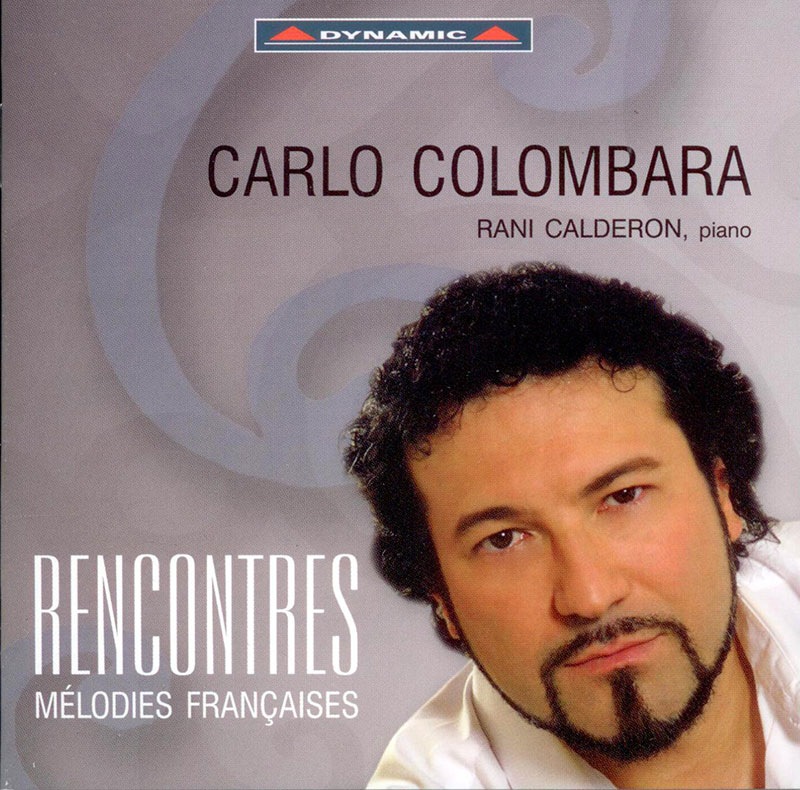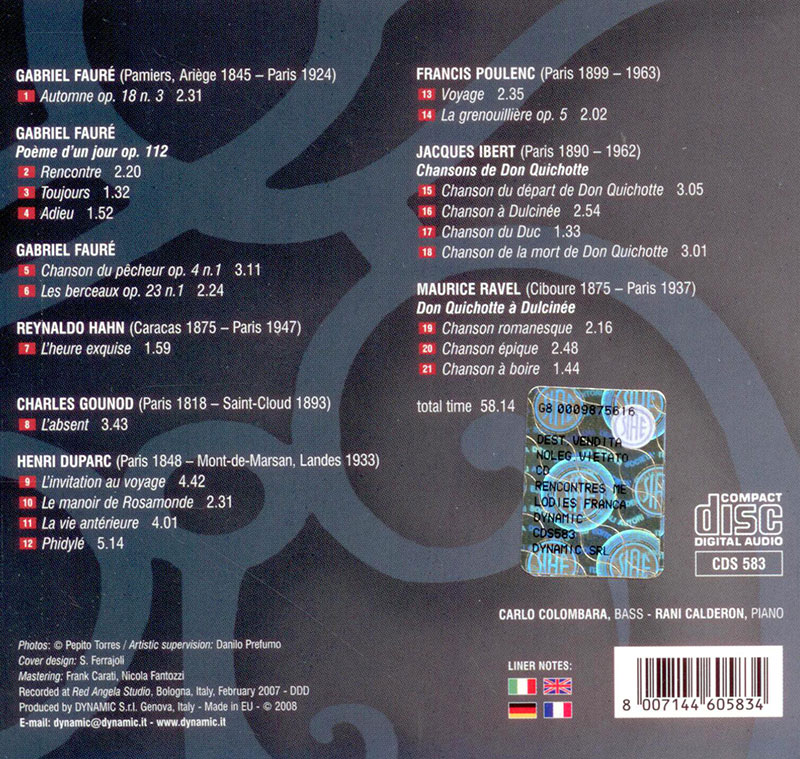Logowanie
Mikołaj - ten to ma gest!
Miles Davis, Horace Silver, Jay Jay Johnson, Percy Heath, Kenny Clarke, Lucky Thompson
Walkin'
20bit K2Super Coding - ale jak to brzmi!
Kasety magnetofonowe
Winylowy niezbędnik
ClearAudio
Double Matrix Professional - Sonic
najbardziej inteligentna i skuteczna pralka do płyt winylowych wszelkiego typu - całkowicie automatyczna
FAURE, GOUNOD, IBERT, RAVEL, Carlo Colombara
Recontres - Melodies francaises

- Carlo Colombara - baritone
- FAURE
- GOUNOD
- IBERT
- RAVEL
This CD presents a collection of French art songs - mélodies - covering a wide range of emotional and stylistic content from Fauré to Ibert. - The complex origins of the mélodie can be traced to two song types, the 18th-century French romance and the lieder of Schubert. - The French composers emphasize the text rather than the melody, and the declamatory style is dominating their vocal writing.The French special sense for beauty manifests itself in the piano part, both in the rich textures employed and in the special harmonies. - The four Henri Duparc’s songs offer the richest writing for the piano as well as the longest and profoundest emotional experiences on this CD. - Gabriel Fauré’s style favours the balance of melodic forces and the research for melodic shadings, even though his admiration for Wagner appears in the use of irregular phrases and the use of a melodic line which becomes more free. - Jacques Ibert’s Quatre Chansons de Don Quichotte, composed in 1931, were included in the soundtrack of the movie ”Don Quixote” directed by Wilhelm Pabst, starring the Russian bass Feodor Chaliapin. - Ravel’s songs are pure and simple and yet full of profound emotional content. These three songs were Ravel’s last works. - The dark timbre and the colourful diversity of Colombara’s voice, as well as his extraordinary vocal culture, make him one of the most sought-after basses of our time. - Critics in Italy and abroad have underlined his stylistic versatility and interpretative suppleness, thanks to which Colombara can project the powerful authority of Verdi’s rulers and father figures just as compellingly as he can breathe life into the filigree cantilenas of Italian bel canto parts. - ”Carlo Colombara was noble and dignified as Norma’s dad, the head priest Oroveso” The Wall Street Journal, Heidi Waleson - ”The other find of the evening was Carlo Colombara, a bass making his New York debut as Mocenigo. Mr. Colombara’s sound is deep and rounded, and he projected Mocenigo’s malign character powerfully but without forcing it.” New York Times, Allan Kozinn































